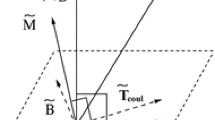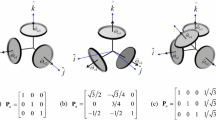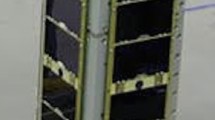Abstract
In this work, a three-axis attitude control of an isoinertial magneto-Coulombic satellite is proposed. The equation is derived for an isoinertial spacecraft, and the stability and control characteristics are developed for a set of given initial conditions. The design is based on general averaging theory which provides the tools for obtaining three-axis controllability of the isoinertial magneto-Coulombic system for any initial angular velocity of the spacecraft without accounting the periodicity of the Earth’s magnetic field. The asymptotic stabilization of the proposed system is proved for a proportional and derivative control algorithm. Finally, the effect of failure of one of the electrostatic charged shells on the attitude stabilization is considered and also, the performance between intact and failure cases is discussed as well. Simulations are carried out for various initial orientations and angular velocities to show the efficacy of the proposed isoinertial magneto-Coulombic attitude control system.




Similar content being viewed by others
References
Tikhonov AA (2003) Method of semipassive attitude stabilization of a spacecraft in the geomagnetic field. Cosm Res 41:63–73
Yamakawa H, Hachiyama M, Bando M (2012) Attitude dynamics of a pendulum shaped charged satellite. Acta Astronaut 70:77–84
Giri DK, Sinha M (2014) Magnetocoulombic attitude control of Earth-pointing satellites. J Guid Control Dyn 37:1946–1960
Sidi MJ (1997) Spacecraft dynamics and control. Cambridge University Press, Cambridge
Wen JTY, Kreuth-Delgado K (1991) The attitude control problem. IEEE Trans Autom Control 36:1148–1162
Fjellstad OE, Fossen TI (1994) Comments on the attitude control problem. IEEE Trans Autom Control 39:699–700
Byrnes CI, Isidori A (1991) On the attitude stabilization of rigid spacecraft. Automatica 27:87–95
Morin P, Samson C (1997) Time-varying exponential stabilization of a rigid spacecraft with two control torques. IEEE Trans Autom Control 42:943–948
Hughes PC (2004) Spacecraft attitude dynamics. Dover, New York
Meirovitch L (1968) On the effects of higher-order inertia integrals on the attitude stability of Earth pointing satellites. J Astronaut Sci 15:14–18
Wang P, Shtessel YB, Wang Y (1998) Satellite attitude control using only magnetorquers. In: Proceedings of the 30th Southeastern symposium on system theory, Philadelphia
Author information
Authors and Affiliations
Corresponding author
Rights and permissions
About this article
Cite this article
Giri, D.K., Sinha, M. Three-axis attitude control of Earth-pointing isoinertial magneto-Coulombic satellites. Int. J. Dynam. Control 5, 644–652 (2017). https://doi.org/10.1007/s40435-015-0206-x
Received:
Revised:
Accepted:
Published:
Issue Date:
DOI: https://doi.org/10.1007/s40435-015-0206-x




